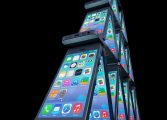Apple USB-C: A Comprehensive Guide to the Versatile Connector

Introduction
In recent years, Apple has made significant shifts in its product lineup by adopting the USB-C standard. This versatile connector has become a staple in many Apple devices, revolutionizing the way we connect and transfer data. In this article, we will provide an in-depth overview of Apple USB-C, including its types, popularity, and its unique features.
1. An Overview of Apple USB-C

Apple USB-C, also known as USB Type-C, is a state-of-the-art connector that offers a uniform interface for both data transfer and power delivery. Unlike its predecessors, the USB-C connector is reversible, which means you can plug it in either way, saving you the hassle of trying to find the correct orientation.
The connector’s small form factor allows for thin and sleek designs in devices such as MacBook Air, MacBook Pro, and iPad Pro. Its versatility extends beyond just data transfer and power delivery, as it also supports video output, making it a one-stop solution for all your connectivity needs.
2. Types and Popularity of Apple USB-C
Apple USB-C comes in various types to cater to different usage scenarios and device compatibility. The most commonly used ones are USB-C to USB-C cables, USB-C to Lightning cables, and USB-C to other connector types (such as HDMI or VGA) adapters.
USB-C to USB-C cables are widely popular, as they allow for fast data transfer speeds of up to 10Gbps and can support power delivery of up to 100W. This makes them ideal for connecting devices like external hard drives, smartphones, and monitors.
USB-C to Lightning cables are primarily used for charging and data syncing with Apple devices such as iPhones and iPads. With this cable, you can quickly charge your Apple devices and transfer data between them and your Mac.
3. Quantitative Measurements of Apple USB-C
When it comes to USB-C, there are a few quantitative measurements to consider. One important aspect is data transfer speeds. USB-C cables support different generations of the USB standard, ranging from USB 2.0 to the latest USB 4.0. The higher the USB generation, the faster the data transfer speed.
Another critical factor to consider is power delivery. USB-C cables can provide various power outputs, ranging from 15W to 100W. This allows for efficient charging of devices, including laptops, tablets, and smartphones.
4. Differentiating Apple USB-C Variants
While USB-C is a universal standard, there are some differences between manufacturers’ implementations. Apple USB-C cables are designed to meet specific requirements and standards set by Apple, ensuring optimal compatibility and performance with Apple devices.
Apple’s USB-C cables often feature advanced circuitry and shielding, providing better reliability and preventing interference. Additionally, Apple’s USB-C ecosystem is tightly integrated with its devices and operating systems, allowing for seamless connectivity and enhanced features like fast charging and data synchronization.
5. Historical Overview of Pros and Cons of Apple USB-C
The adoption of USB-C by Apple has brought both advantages and disadvantages. On the positive side, USB-C offers a unified connector that simplifies connectivity across devices. It eliminates the need for multiple ports and cables, creating a streamlined user experience. Additionally, USB-C’s reversible design addresses one of the most common frustrations associated with previous connectors.
However, the transition to USB-C also meant that users needed to invest in new cables and adapters to connect their existing devices. This initially created inconvenience and additional costs for consumers. Furthermore, as USB-C is a relatively new standard, compatibility issues with older devices may arise, requiring users to rely on adapters or dongles.
Conclusion
Apple USB-C has undoubtedly revolutionized the way we connect and transfer data. Its small form factor, versatility, and compatibility have made it an essential component in Apple’s lineup of devices. Whether you’re looking for fast data transfer, efficient power delivery, or video output, Apple USB-C has got you covered. Embrace this groundbreaking technology and enjoy the benefits of seamless connectivity.
[INSERT VIDEO HERE]
References:
– Apple USB-C Technology: https://www.apple.com/usb-c/
– USB-C Explained: https://www.usb.org/sites/default/files/documents/usb_3_2_r1_0_presentation_final_final.pdf
– USB-C vs. other Connectors: https://www.androidauthority.com/usb-type-c-vs-micro-usb-784373/
















































